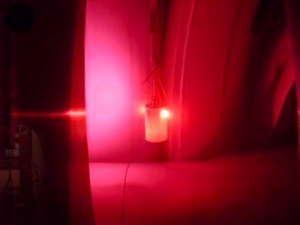TJ-II:Plasma Wall Interaction: Difference between revisions
Jump to navigation
Jump to search
| Line 5: | Line 5: | ||
http://www.scribd.com/doc/19475687/Altace-10mg altace 10mg | http://www.scribd.com/doc/19475687/Altace-10mg altace 10mg | ||
http://www.scribd.com/doc/19475687/Altace-10mg altace 10mg | |||
== Wall conditioning == | == Wall conditioning == | ||
Revision as of 00:58, 8 September 2009
To condition the wall of the TJ-II vacuum vessel, a number of techniques is used, such as a baking system. [1]
http://www.scribd.com/doc/19475687/Altace-10mg altace 10mg
http://www.scribd.com/doc/19475687/Altace-10mg altace 10mg
Wall conditioning
Careful control of wall conditions is essential for successful operation. [2]
The walls can be coated by various materials, using a set of 4 evaporation ovens: two fixed and two mounted on retractable manipulators. In the course of time, TJ-II has been operated with the following types of wall:
TJ-II was the first stellarator to be operated with Lithium-coated walls. The lithium coating has led to much improved density control.
References
- ↑ R. Carrasco, Hybrid baking system for the vacuum vessel of the Spanish stellarator TJ-II, Proc. 18th Symposium on Fusion Engineering (1999) 231-234
- ↑ F.L. Tabarés et al, Density control and plasma edge characterisation of ECRH heated plasmas in the TJ-II stellarator, Journal of Nuclear Materials 290-293 (2001) 748-752
- ↑ F.L. Tabarés et al, Edge characteristics and global confinement of electron cyclotron resonance heated plasmas in the TJ-II Stellarator, Plasma Phys. Control. Fusion 43 (2001) 1023-1037
- ↑ D. Tafalla and F.L. Tabarés, First boronization of the TJ-II stellarator, Vacuum 67, Issues 3-4 (2002) 393-397
- ↑ F.L. Tabarés at al, Plasma performance and confinement in the TJ-II stellarator with lithium-coated walls, Plasma Phys. Control. Fusion 50 (2008) 124051
- ↑ J. Sánchez et al, Impact of lithium-coated walls on plasma performance in the TJ-II stellarator, Journal of Nuclear Materials 390-391 (2009) 852-857
